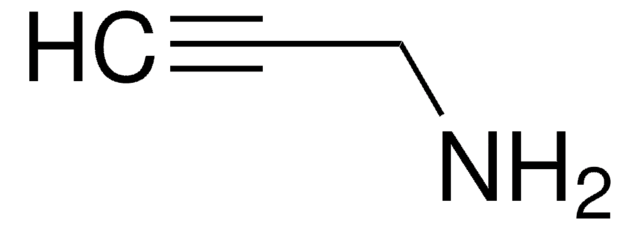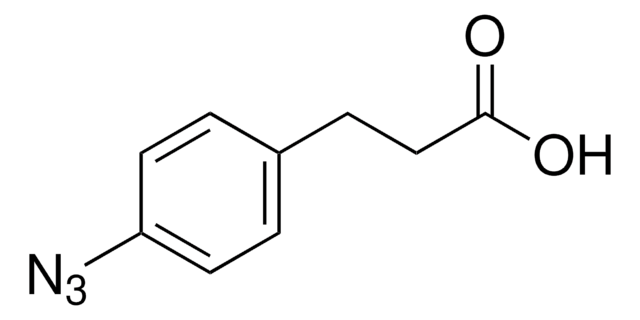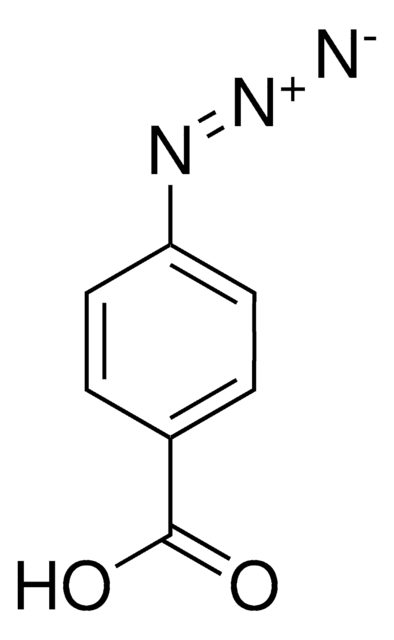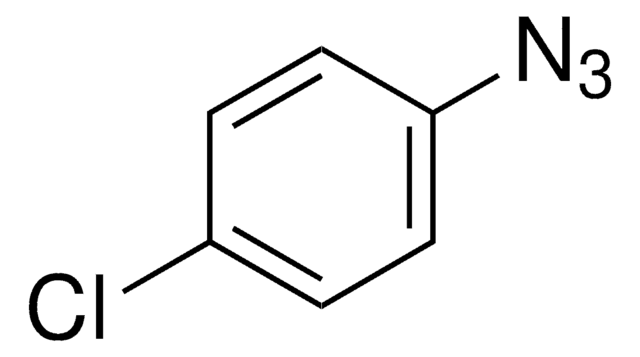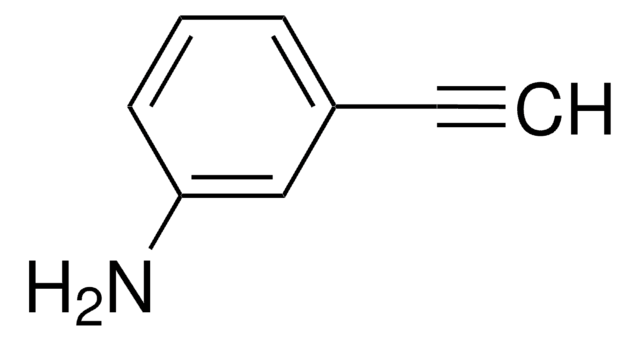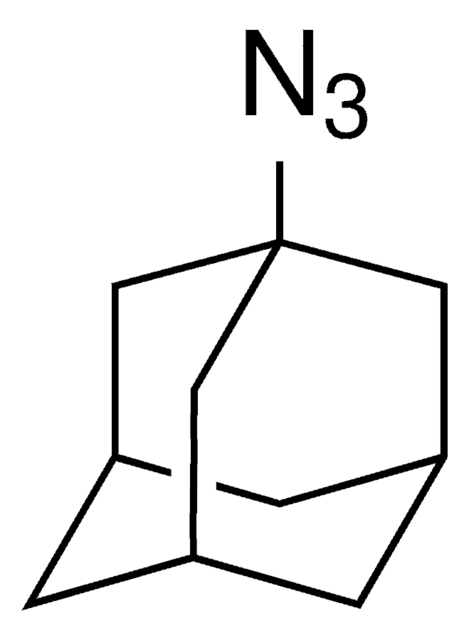359556
4-Azidoaniline hydrochloride
97%
Sinónimos:
4-Aminophenyl azide hydrochloride
About This Item
Productos recomendados
assay
97%
reaction suitability
reaction type: click chemistry
mp
165 °C (dec.) (lit.)
functional group
azide
SMILES string
Cl.Nc1ccc(cc1)N=[N+]=[N-]
InChI
1S/C6H6N4.ClH/c7-5-1-3-6(4-2-5)9-10-8;/h1-4H,7H2;1H
InChI key
SDYAJRBHPPWHSF-UHFFFAOYSA-N
¿Está buscando productos similares? Visita Guía de comparación de productos
Application
signalword
Danger
Hazard Classifications
Acute Tox. 3 Dermal - Acute Tox. 3 Inhalation - Acute Tox. 3 Oral - Eye Irrit. 2 - Flam. Sol. 2 - Skin Irrit. 2 - STOT SE 3
target_organs
Respiratory system
Storage Class
4.1B - Flammable solid hazardous materials
wgk_germany
WGK 3
flash_point_f
Not applicable
flash_point_c
Not applicable
ppe
Eyeshields, Faceshields, Gloves, type P3 (EN 143) respirator cartridges
Elija entre una de las versiones más recientes:
¿Ya tiene este producto?
Encuentre la documentación para los productos que ha comprado recientemente en la Biblioteca de documentos.
Los clientes también vieron
Nuestro equipo de científicos tiene experiencia en todas las áreas de investigación: Ciencias de la vida, Ciencia de los materiales, Síntesis química, Cromatografía, Analítica y muchas otras.
Póngase en contacto con el Servicio técnico